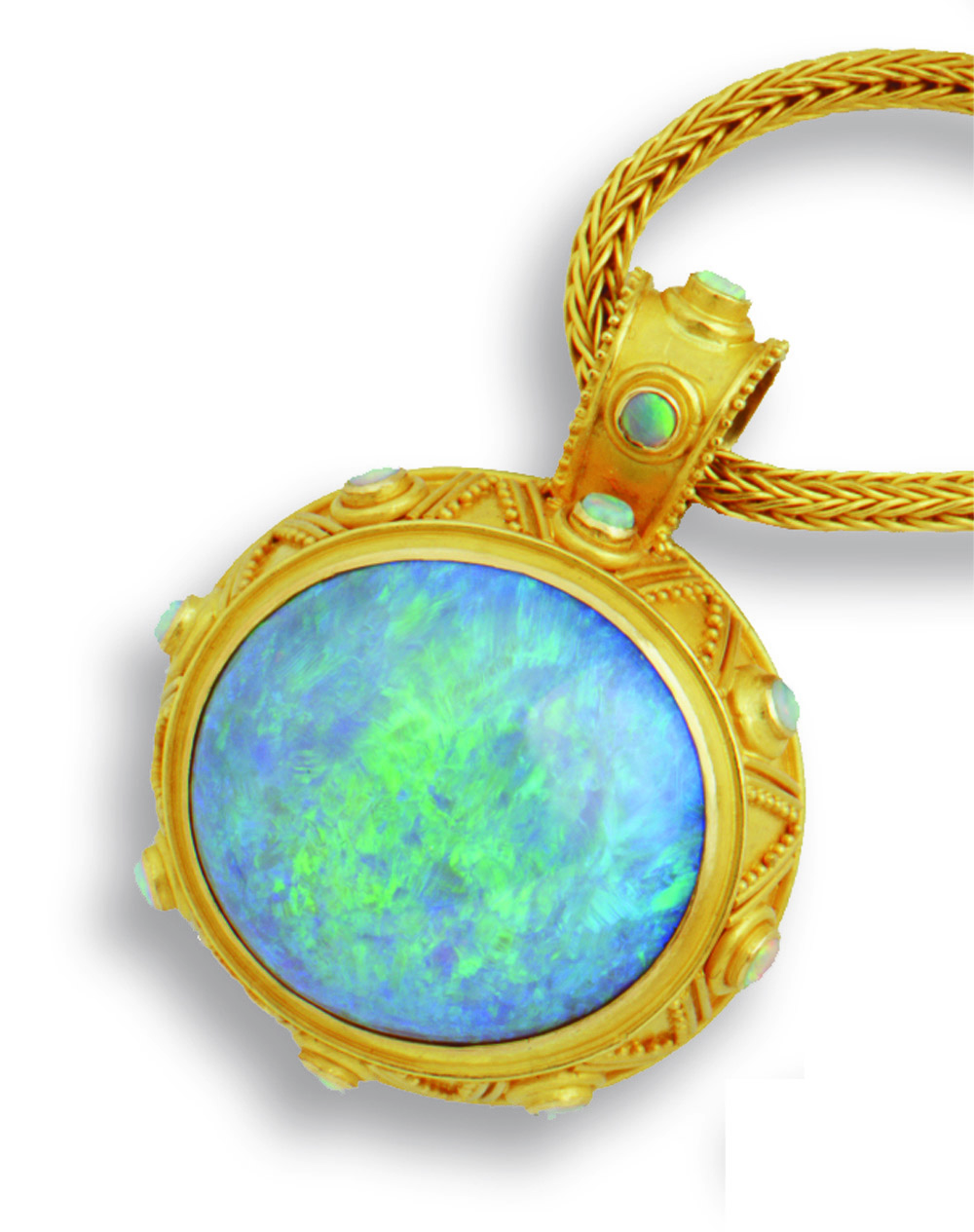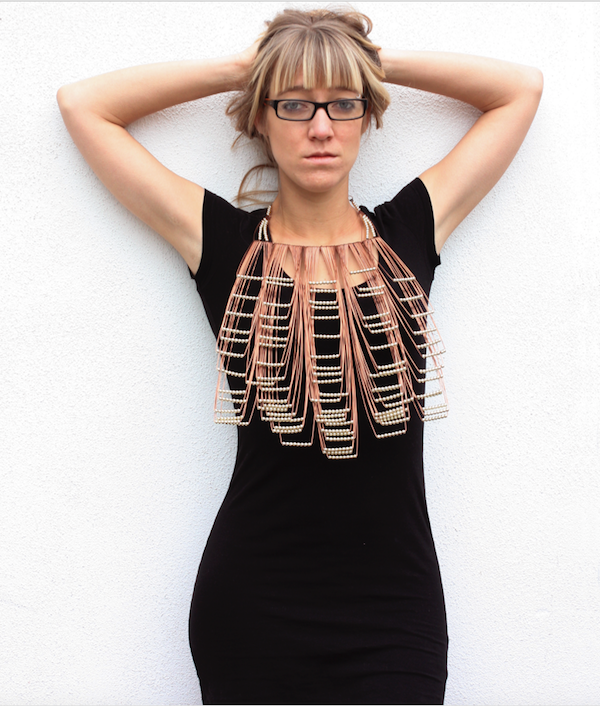Will wearing opal bring you bad luck if it isn’t your birthstone?
Of all the ancient myths about gemstones, none endure like the superstitions surrounding opal. The bad-luck opal myth isn’t really ancient. It comes from 19th-century fiction.
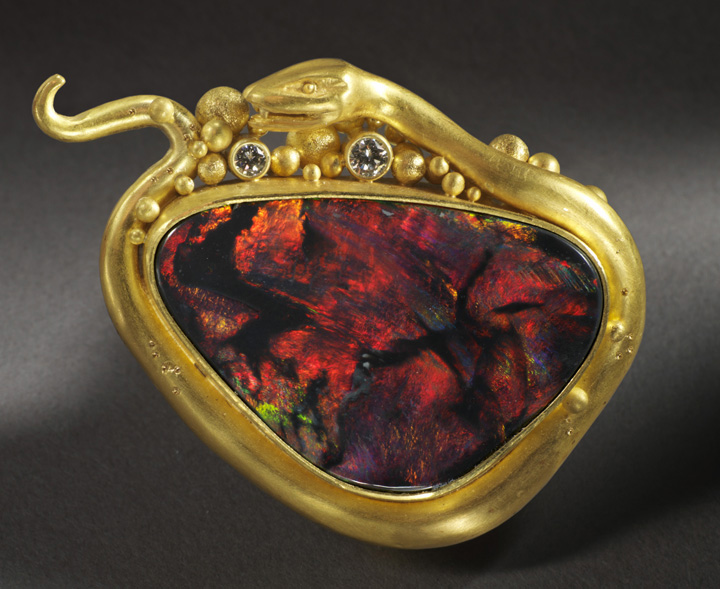
For centuries, opal was considered a lucky talisman. In ancient times, when most gemstone myths were born, you find glowing reports. Arabs believed opals fell from heaven in lightning flashes, and anyone possessing such a divine relic could consider himself safe from harm.
Coveted by everyone from Mark Anthony to Empress Josephine, opals were cherished for protection. But their reputation took a dive in 1829 when Sir Walter Scott wrote the gothic novel, Anne of Geierstein. (At the time, Scott’s novels were consumed and discussed like the latest episode of Mad Men.) In the novel, the opal hair ornament of a beautiful woman is splashed with holy water in church. She faints, then later vanishes. Within months of publication, opal sales dropped about 50 percent and never completely recovered.
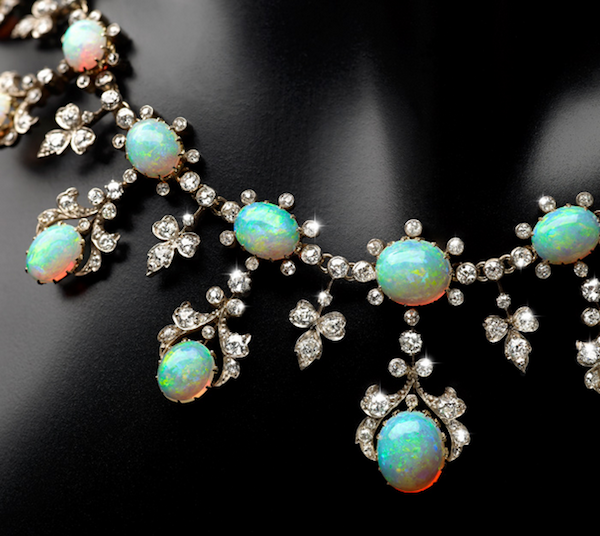
Australian opal dealers have done a good job of countering the propaganda but even today, jewelers tell tales of customers returning jewelry after a streak of bad luck. Someone told me her great aunt flushed a valuable opal-and-diamond ring down the toilet after her marriage and health failed. Ouch! I guess she didn’t want to risk passing its evil power to someone else.
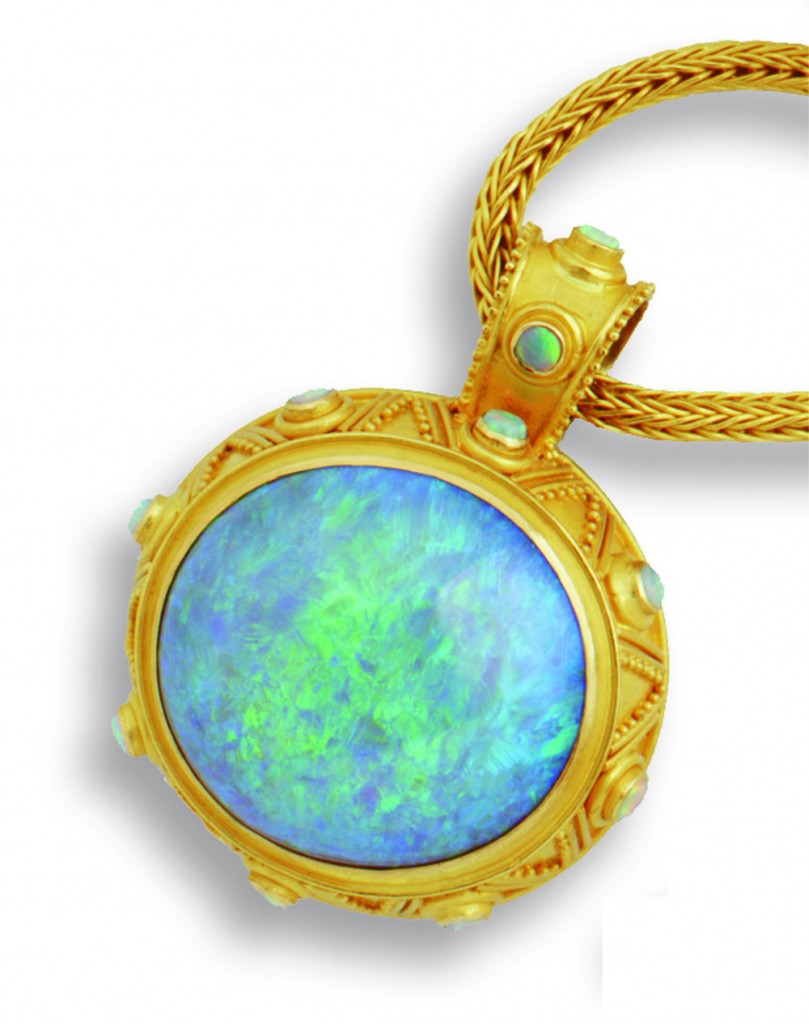
If you’ve ever gazed into the fire of a fine opal, you can understand how a belief in its other-worldly powers might follow it into modern times. Unlike gemstones of uniform color, every opal is unique and ever-changing. Opals often appear lit from within, almost alive. As ancient Roman scholar Pliny the Elder wrote in 55 A.D., opals possess “the refulgent fire of the ruby, the glorious purple of the amethyst, the sea green of the emerald” and together “simulate the flaming fire of burning sulphur.” This quality comes from opal’s unique structure, a series of silica balls of various sizes that scatter light through all the colors of the spectrum.
I have a white opal ring, pretty nondescript at first glance, but in lamplight, blue-green flames flicker inside. Turn it slightly and a red sun appears and begins to rise. On an overcast day, the sun dissolves into pink mist and the flames turn electric green and rise to the surface.
I’ve always assumed opals worked in my favor, sort of my personal talisman, having heard in my impressionable youth that opals were good luck for the October-born. That concept was actually popularized by Tiffany & Co at the turn of the 20th century, when they created the market for birthstones. Tiffany promoted opal jewelry with this jingle: “October’s child is born for woe, and life’s vicissitudes must know; but lay an opal on her breast and hope will lull those fears to rest.”
(Vicissitudes, hmm.) Notice Tiffany didn’t attempt to defy the superstition, they just created a loophole. In the process, the idea that opal is dangerous in the wrong hands became even further entrenched.
Personally, I’m going with Orpheus of Lithika. Around 350 A.D., he claimed that opal “fills the hearts of the gods with delight.” No birth date mentioned.

